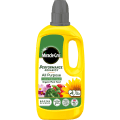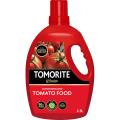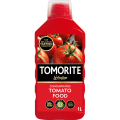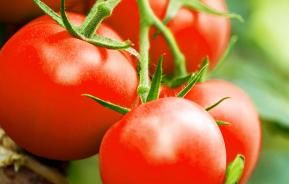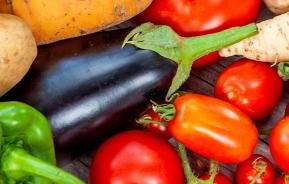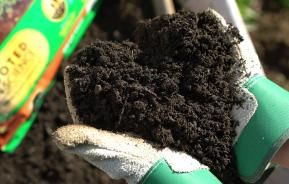Whether you wear your green fingers as a badge of honour, or you’re just starting out in the world of gardening, it’s a hobby that requires a lot of knowledge. From how to grow vegetables, to stopping pests from eating your crops – the quest for the right solution never ceases. Luckily, we have the knowledge to help you create your very own green oasis.
Our expert team has found the top questions that everyone has been asking about gardening, and we’ll be sharing the answers with you below.
Here are the top 10 most searched for garden queries online throughout February and March 2020:
The search volume of the top 10 questions shows that gardening has rapidly become a popular pastime in the current climate. With the UK currently in lockdown due to COVID-19, our data shows that search volume for gardening questions has increased enormously.
However, the volume may not be completely due to the uptake of gardening as a lockdown hobby – March and April are the perfect time to plant every year, ready for Summer blooms.
‘How to grow potatoes’ is the most searched for, with a monthly uplift of 161%. 'How to get rid of ants’ is the second most popular with an uplift of 124%, perhaps in relation to the warm weather in the UK, which is known to attract ants. We’ve taken your top 10 most searched for garden queries and here are the answers you were looking for…
How to Grow Potatoes

Potatoes are a favourite in every household, whether you prefer them boiled, mashed or fried. Growing your own can be a rewarding experience, but for the gardening novice, it can be a minefield.
Luckily, potatoes will grow in almost any type of soil, but they’ll fare better if you add well-rotted manure and garden compost. You can grow them in grow bags, and when it comes to watering them, never saturate the compost too much. When planting in Spring, you can expect the first early potatoes to arrive in June/July – perfect for a summer potato salad.
Common diseases that can damage your potatoes include potato blight, blackleg, scab and rot. Slugs are also a huge nuisance to potatoes – you can spot if they’re infiltrating by looking for the tell-tale slime trail.
For full guidance on growing, fertilising and harvesting potatoes – plus remedies for diseases, you can view our full guide on how to grow potatoes
How to Get Rid of Ants
Ants are a common pest, particularly in the Summer. In the garden, they rarely damage plants directly, although if you have a large nest, it may expose the root systems to air rather than the earth nutrients that they are used to, which can cause them to dry out.
There are lots of ways to get rid of ants, but a common thought process is to kill the ones that you see walking around – however, these are just the worker ants, and the nest is the real issue, as the home to the queen, larvae and cocoons. You can use granules both inside and in the garden – if you sprinkle it dry, the ants will take it back to the nest, or you can mix with water and pour directly on to the nest. Other common destruction methods include spraying and using traps.
The UK has 50 species of ants – you can read more about them, and how to get rid of ants in our full guide.
How to Grow Tomatoes

Juicy, fresh tomatoes are a Summer must-have, and they taste so much better when they’ve been harvested from your own garden or windowsill. The good news is, they are relatively easy to grow, and if you time your planting accordingly, you will be able to enjoy them from the height of Summer right through to October.
When growing tomatoes, a rich soil with organic matter is ideal. One of the best things about them is that you don’t need a garden – you can grow tomatoes on your balcony or patio. You should sow your tomato seeds in April, and they’ll be ready to plant into bigger pots or straight into the soil at the end of May, or early June. Be careful not to over-water or under-water a tomato plant and tackle any pests with a solid bug killer.
To find out more about the different types of tomato plants and the pests that plague them, check out our handy detailed guide on how to grow tomatoes.
How to Grow Strawberries

Sweet, fresh strawberries are a real treat, and so easy to grow at home. They need a sunny position, where they’ll be able to get plenty of warmth to ripen. There’s no need to worry about space either, as these forgiving fruits will grow in containers, including hanging baskets. Water regularly and thoroughly, especially during sunny dry spells – but always water the base of the plant to avoid grey mould. A well-looked after strawberry plant will be a long-time friend, providing fruit for up to six years.
Find out more about growing strawberries in our extensive guide.
When to Prune Apple Trees
If you’re looking for advice on when to prune your apple tree, we can help. Pruning can seem daunting, But it’s worth doing. Pruning your apple tree ensures a healthy tree that produces fruit year after year. They need to be pruned in the winter, between November and March, when the leaves have fallen, and the tree isn’t quite yet in the bud. If you prune too late in the Spring, you will reduce the amount of growth and produce.
The good news is that to prune, you’ll only need a pair of clean and sharp secateurs, a pruning saw and a pair of gloves. Cut away any dead, diseased wood to start, before taking a step back and spotting if any wayward branches are growing into each other, across each other or into the centre of the tree.
View the rest of our top tips for pruning apple trees and our expert do’s and don’ts.
How to Get Rid of Moles
Discovering a mole infestation through holes across your lawn can be disheartening, but they’re not impossible to get rid of. We’ll walk you through how to combat moles effectively. Unfortunately, moles are notoriously difficult to get rid of humanely – there are lots of traps and devices on the market, but you may want to call in professional help.
Once the pesky moles have vacated, you will be left with lumps of earth. Don’t be tempted to rake over them, use a hose to funnel the earth back into the holes and then tread down and re-seed.
Read our guide for further advice on getting rid of moles and tackling other lawn problems.
How to Plant Onions

Onions are a staple ingredient for numerous favourite dishes across the world. For a gardener, they’re easy to grow all year round so they make an obvious choice for your home crop. Onions take approximately four months from seed to harvest – you can opt to plant sets which are easier and quicker to grow. Onions prefer neutral or slightly alkaline soil, and they must be placed in a well-drained sunny spot. You can’t plant onions in shallow grow bags, but if you’re low on space, use deeper filled planters. If growing from seed, plant them inside in January and plant them outside from March-April. Spring onions can be planted from April. Keep the beds well weeded, and look out for birds, and you should be able to enjoy the flavour of homegrown onions in your cooking very soon.
Read our guide for advice on planting onions and the diseases that can plague your crop.
How to Grow Vegetables
If you’ve always wanted to grow your own veggies but never knew where to start, we can help. Vegetables are adaptable and can be grown in numerous ways. Giving them their own space to grow can be a fantastic feature for your garden. To start, you’ll need some all-purpose compost, a container or space to plant, seeds/young plants, plant food and a fork and trowel.
You can grow vegetables in any unused corner of your garden, or place pots on well-lit windowsills or on balconies. If you’re using containers, fill them halfway with planter soil, breaking up lumps. For planting in outdoor beds, break up the soil surface with a fork and fill with the compost and contents of the planter.
Now for the exciting bit! Choose vegetables that you enjoy eating and plant them in the soil as per the packet instructions. After six weeks, you’ll need to top up your plants with plant food. Planting flowers amongst your vegetables can help to ward off pests. In no time at all, you’ll be enjoying the fruits (or vegetables, in this case) of your labour!
When to Plant Vegetables
Harvesting is usually in mid-Summer, but some vegetables – such as beans, carrots, radishes and potatoes – will harvest earlier, and some will harvest later, including beetroot, brussel sprouts, cabbages, leeks, parsnips.
Some vegetables such as tomatoes, sweetcorn, cabbages, and marrows will need to be sown inside before moving outside.
Check out our full guide on planting vegetables.
What Do Birds Eat?

Do you want to attract birds to your garden? Thinking about your location and the species in the area is key in determining what a bird will eat. The location determines the food sources available, whilst each species has a varying diet.
Birds can be sorted into categories based upon their food source – and this is good to keep in mind when you’re thinking about the type of birds you want to attract to your garden. Firstly, there are carnivorous birds, which eat meat primarily through hunting and scavenging, such as hawks, falcons and eagles.
Piscivorous birds eat fish and can usually be identified through their bills, such as osprey. Herons, pelicans and gulls are partially piscivorous. Insectivorous birds eat primarily insects, and this type of diet is common for a variety of birds including swallows, bluebirds, warblers and wrens.
If you’d like to attract birds that help your garden such as blackbirds and thrushes, they eat primarily fruit such as bananas, oranges and berries. Birds that feed on seeds and grains are known as granivorous, such as game birds, sparrows and finches. Some birds feed on plant juices and sap – including woodpeckers and hummingbirds.
If you’d like to start feeding birds, it’s recommended that you purchase a bird feeder or build one yourself. There isn’t a food source that works for them all, so once you decide which species you’d like to attract, you can create recipes based on their food source. Check out our full guide to feeding birds.
Hopefully our handy guide has answered all your burning gardening questions. If not, head over to our advice and inspiration hub, where we have hundreds of guides on all garden topics.


